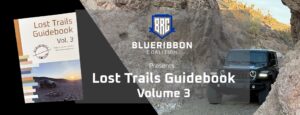Unmasking the Controversy-What’s Really in the BLM Land Transfer Bill
By Loren Campbell, President, Utah Public Lands Alliance
What the Maloy-Amodei Amendment Really Does
This bill does not mandate the sale of public land. It simply makes 94 specific parcels—totaling 12,982 acres—available for purchase by local governments at fair market value. Of these, 12,920 acres are in Washington County. That’s just about 2% of the 629,000 acres of BLM-managed land in the county, or 1.5% of all federally managed land in the area.
The requested parcels originate from long-standing local planning documents. Some have been under Recreation and Public Purpose (R&PP) requests for years. This bill provides the mechanism to finally act on these plans through a transparent process involving appraisals and local decision-making.
Empowering Local Control
Utah has consistently called for the transfer of certain federally managed lands to local control—this bill is a direct response to that need. Allowing local governments to acquire these parcels enhances their ability to manage them in ways that benefit residents, whether for infrastructure, parks, utilities, or other public purposes.
Critics have claimed these parcels will be used for “affordable housing.” But in Utah, the amendment includes no specific use restrictions—and only a handful of parcels are even being considered for housing. Each municipality will determine land use based on their community needs, with no federal mandate or blanket development plan.
Preserving Recreation and Scenic Values
We conducted a parcel-by-parcel analysis of all 94 areas, including map reviews and field visits for those requiring closer inspection. Of these, 32 parcels were flagged for deeper review. Working alongside representatives from the Washington County Water Conservancy District, Washington County, Congresswoman Maloy’s office, and recreation advocacy groups—including Utah
Public Lands Alliance, Desert Roads and Trails Society, and the BlueRibbon Coalition—we evaluated each parcel’s potential impact on OHV use, other recreation, and scenic value.
The result? We found no significant adverse impacts to OHV access or outdoor recreation. Many parcels are already encumbered with utility easements or limited-use authorizations. Transferring these lands to local control will improve the ability to make upgrades such as utility extensions, road improvements, or public access enhancements.
A Public Purpose for the People
Every parcel identified in the amendment serves a clear public purpose—whether for water infrastructure, trailheads, civic expansion, or improving public access. By converting these areas from uncertain federal status to accountable local stewardship, this amendment gives communities the tools to responsibly meet growing regional needs.
Conclusion: Rejecting Misinformation, Embracing Opportunity
Unfortunately, much of the media coverage surrounding this bill has relied on emotional appeals rather than facts. Let’s set the record straight: this amendment empowers local governments to purchase select parcels for meaningful public use. It does so with safeguards, local input, and full appraisal transparency.
We stand in full support of Congresswoman Celeste Maloy for her leadership and responsiveness to Utah’s long-standing call for balanced, responsible land management. This amendment is good for Washington County, good for local governance, and good for the people who call this land home.
Click any of the articles below for more information
Final Site Specific Review of BLM Land Transfer
amodei-amendment-NVUT-Land-Sales
UT5_Water_Conservancy_Compressed
UT 3 – Washington County Land Conveyance East Half – April 11 2025
UT 4 – Washington County Land Conveyance West Half – April 9 2025
UT 2 – City of St George Utah Land Conveyance – March 28 2025
”]
Visit www.UtahPLA.com or email President@UtahPLA.com to learn more about our Mission
